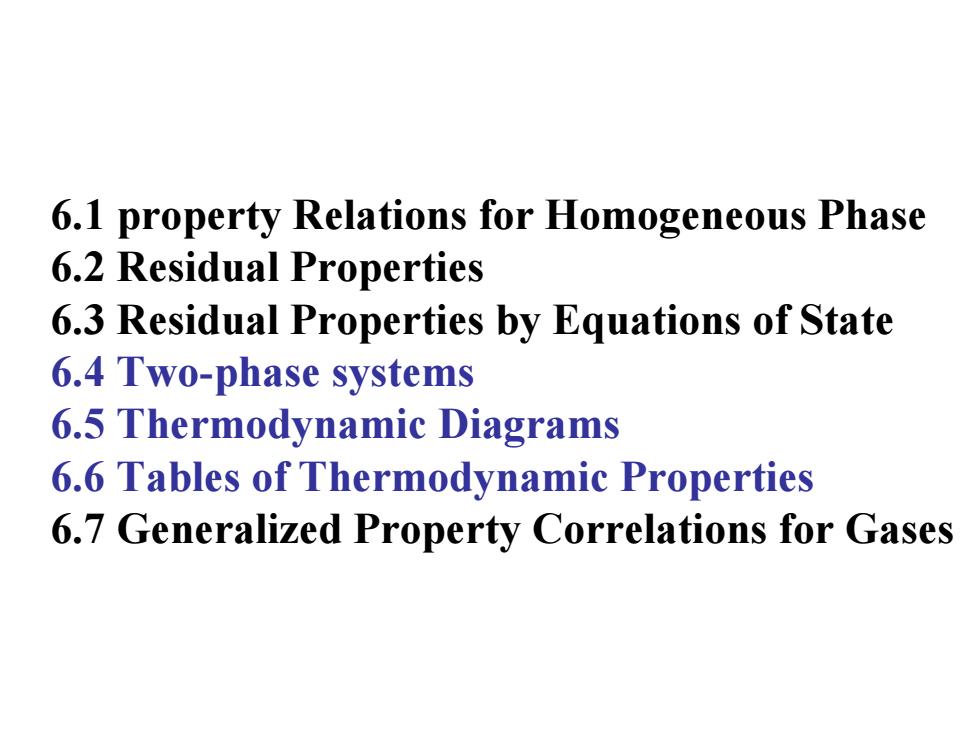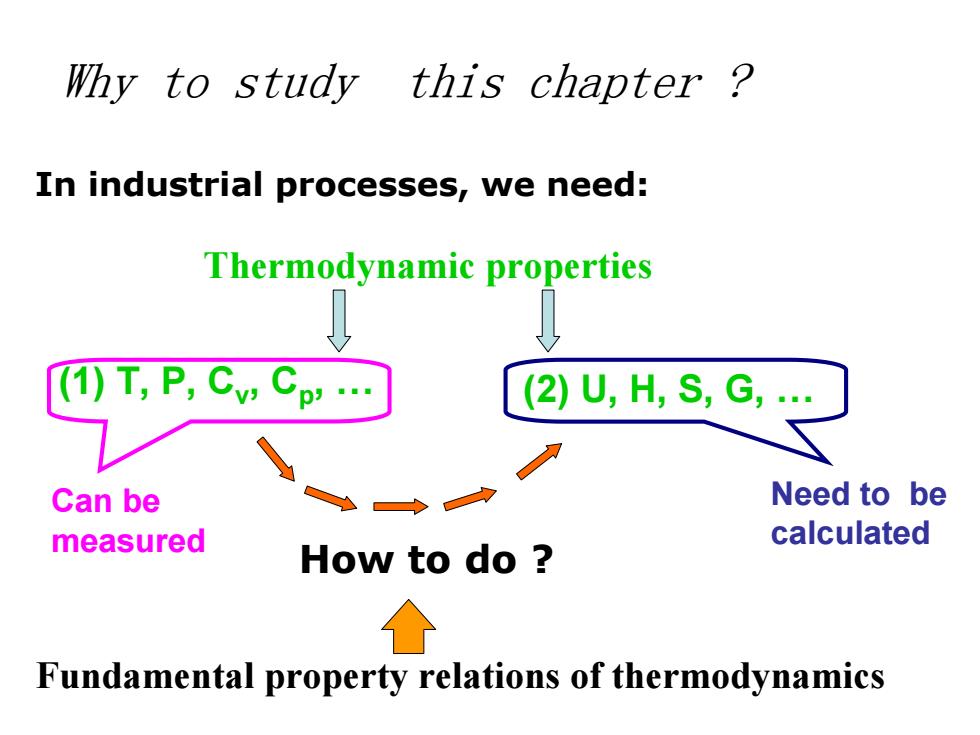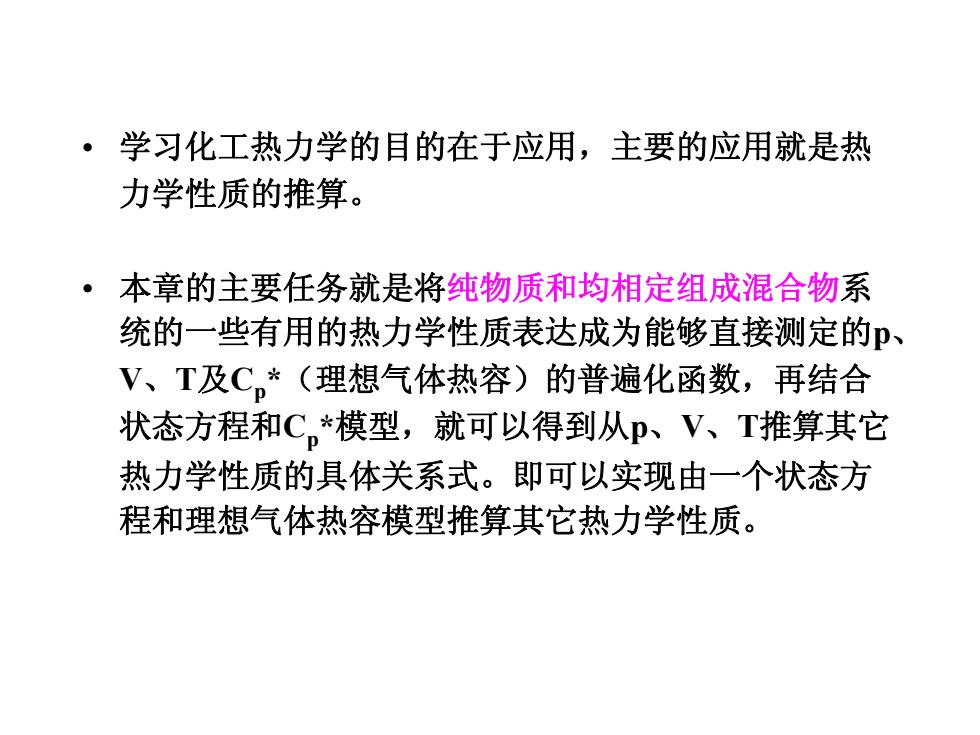
Chapter 6 Thermodynamic properties of fluids
Chapter 6 Thermodynamic properties of fluids

6.1 property Relations for Homogeneous Phase 6.2 Residual Properties 6.3 Residual Properties by Equations of State 6.4 Two-phase systems 6.5 Thermodynamic Diagrams 6.6 Tables of Thermodynamic Properties 6.7 Generalized Property Correlations for Gases
6.1 property Relations for Homogeneous Phase 6.2 Residual Properties 6.3 Residual Properties by Equations of State 6.4 Two-phase systems 6.5 Thermodynamic Diagrams 6.6 Tables of Thermodynamic Properties 6.7 Generalized Property Correlations for Gases

Why to study this chapter? In industrial processes,we need: Thermodynamic properties T,P,Cv:Cp' (2)U,H,S,G Can be Need to be measured calculated How to do Fundamental property relations of thermodynamics
Why to study this chapter ? In industrial processes, we need: Thermodynamic properties (1) T, P, C v, C p, . (2) U, H, S, G, . How to do ? Can be measured Need to be calculated Fundamental property relations of thermodynamics

·学习化工热力学的目的在于应用,主要的应用就是热 力学性质的推算。 ·本章的主要任务就是将纯物质和均相定组成混合物系 统的一些有用的热力学性质表达成为能够直接测定的p、 V、T及C,*(理想气体热容)的普遍化函数,再结合 状态方程和C,*模型,就可以得到从p、V、T推算其它 热力学性质的具体关系式。即可以实现由一个状态方 程和理想气体热容模型推算其它热力学性质
• 学习化工热力学的目的在于应用,主要的应用就是热 力学性质的推算。 • 本章的主要任务就是将纯物质和均相定组成混合物系 统的一些有用的热力学性质表达成为能够直接测定的p、 V、T及Cp*(理想气体热容)的普遍化函数,再结合 状态方程和Cp*模型,就可以得到从p、V、T推算其它 热力学性质的具体关系式。即可以实现由一个状态方 程和理想气体热容模型推算其它热力学性质

6 Thermodynamic properties of fluids 6.1 property Relations for Homogeneous Phase 6.2 Residual Properties 6.3 Residual Properties by Equations of State 6.4 Two-phase systems 6.5 Thermodynamic Diagrams 6.6 Tables of Thermodynamic Properties 6.7 Generalized Property Correlations for Gases
6.1 property Relations for Homogeneous Phase 6.2 Residual Properties 6.3 Residual Properties by Equations of State 6.4 Two-phase systems 6.5 Thermodynamic Diagrams 6.6 Tables of Thermodynamic Properties 6.7 Generalized Property Correlations for Gases 6 Thermodynamic properties of fluids